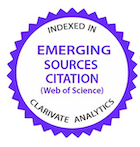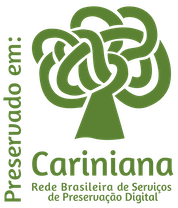Eficácia anti-helmíntica da ivermectina em equinos: exames coproparasitológicos e hematológicos
DOI:
https://doi.org/10.1590/1809-6891v19e-44583Resumo
O objetivo do presente estudo foi avaliar a eficácia da ivermectina a 2% em equinos, através de exames coproparasitológicos e hematológicos. O experimento foi realizado em uma fazenda no município de Uberlândia, MG. Foram utilizados 24 equinos, de três a oito anos, divididos em dois grupos, conforme valores dos OPG. Contagens de OPG e coproculturas foram realizadas nos dias D0, D+7 e D+14. Os animais foram tratados com a formulação pasta a base de ivermectina 2%, na dose de 200 mcg/kg, via oral. Amostras de sangue foram coletadas nos dias D0, D+7 e D+14 para avaliação dos parâmetros hematológicos. A presença de ovos, característicos da família Strongylidae e identificação de larvas características de ciatostomíneos demonstrou o parasitismo dos animais por pequenos estrôngilos. Nos D+7 e D+14 houve a redução significativa do OPG no grupo tratado com eficácia de 99,5 e 99,7%, respectivamente. Observou-se tendência do quadro eritrocitário manter-se próximo aos limites inferiores e discreta leucocitose com neutrófilos próximos dos valores superiores. Pode-se inferir que a ivermectina é eficaz contra os ciatostomíneos e alterações hematológicas significativas não foram observadas.
Palavras-chave: Ciatostomíneos; Equinos; Nematódeos; OPG
Downloads
Publicado
Como Citar
Edição
Seção
Licença
Copyright (c) 2018 Ciência Animal Brasileira

Este trabalho está licenciado sob uma licença Creative Commons Attribution 4.0 International License.
Autores que publicam nesta revista concordam com os seguintes termos:
- Autores mantém os direitos autorais e concedem à revista o direito de primeira publicação, com o trabalho simultaneamente licenciado sob a Licença Creative Commons Attribution que permite o compartilhamento do trabalho com reconhecimento da autoria e publicação inicial nesta revista.
- Autores têm autorização para assumir contratos adicionais separadamente, para distribuição não-exclusiva da versão do trabalho publicada nesta revista (ex.: publicar em repositório institucional ou como capítulo de livro), com reconhecimento de autoria e publicação inicial nesta revista.
- Autores têm permissão e são estimulados a publicar e distribuir seu trabalho online (ex.: em repositórios institucionais ou na sua página pessoal) a qualquer ponto antes ou durante o processo editorial, já que isso pode gerar alterações produtivas, bem como aumentar o impacto e a citação do trabalho publicado (Veja O Efeito do Acesso Livre).






























